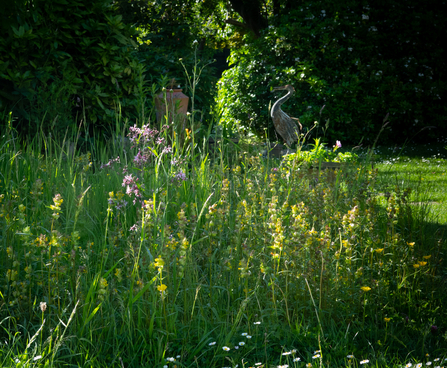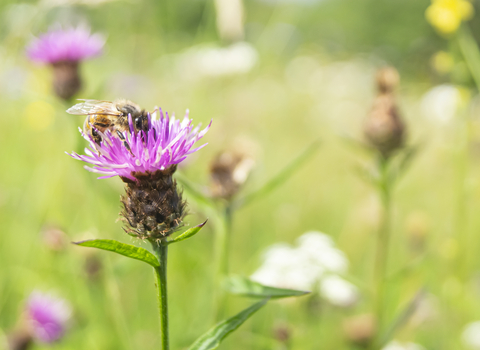What is a mini meadow?
Wildflower meadows in the UK have dramatically decreased in size over the past 80 years, by 97%! Wildflowers provide nectar and pollen for insects, foodplants for their larvae and seeds for birds, as well as supporting hedgehogs and other small mammals. Not only that, wildflower meadows store carbon and filter pollutants!
The good news is that you can add native wildflowers to your garden with a mini meadow, which will support your local wildlife. A mini meadow can be any size or shape – it’s an area in your garden, such as part of your lawn, where you plant wildflower seeds and bulbs.
Our lawns are so much more than just a patch of grass, they’re a central part of many gardens and open spaces. They’re a bridge between our living space and the wild world that surrounds it. Lawns can be a place to play and relax, whilst still making room for wildlife. A wilder lawn or mini meadow holds many benefits for people and wildlife.
Mini meadow benefits
- Mini meadows are beautiful and full of life! You can convert all or some of your grass lawn or community space.
- They are low maintenance. Once the initial work of planting them in is done, you only need to mow the area once or twice per year.
- You’ll be providing important habitat space and food for numerous bugs, bees, butterflies, hoverflies, beetles and moths. Power to the pollinators!
- These bugs feed more wildlife, including birds, bats and hedgehogs.
- Pollinators pollinate the wildflowers, which self-seed to help spread.
- You’ll be doing your bit for local wildlife, connecting green spaces.



